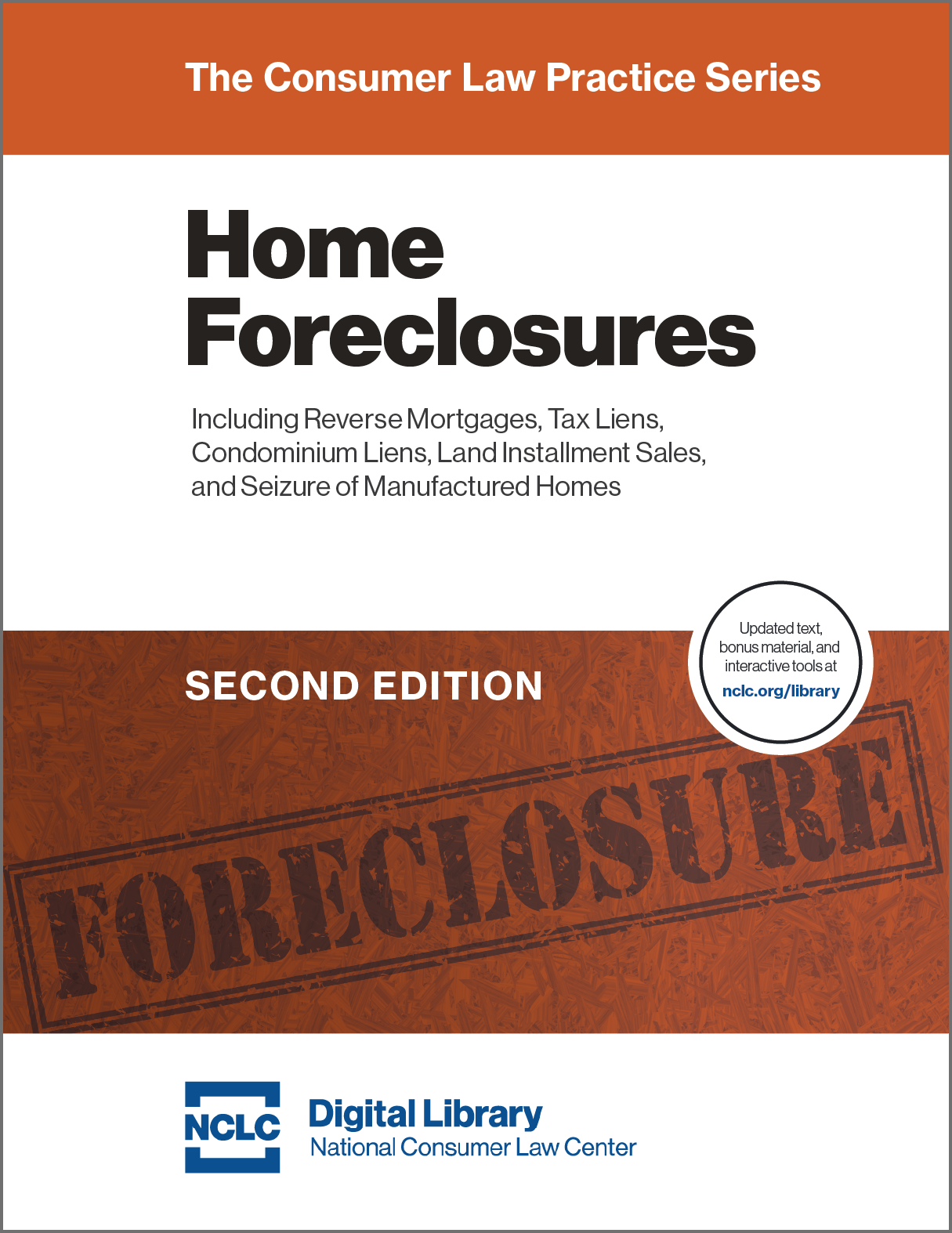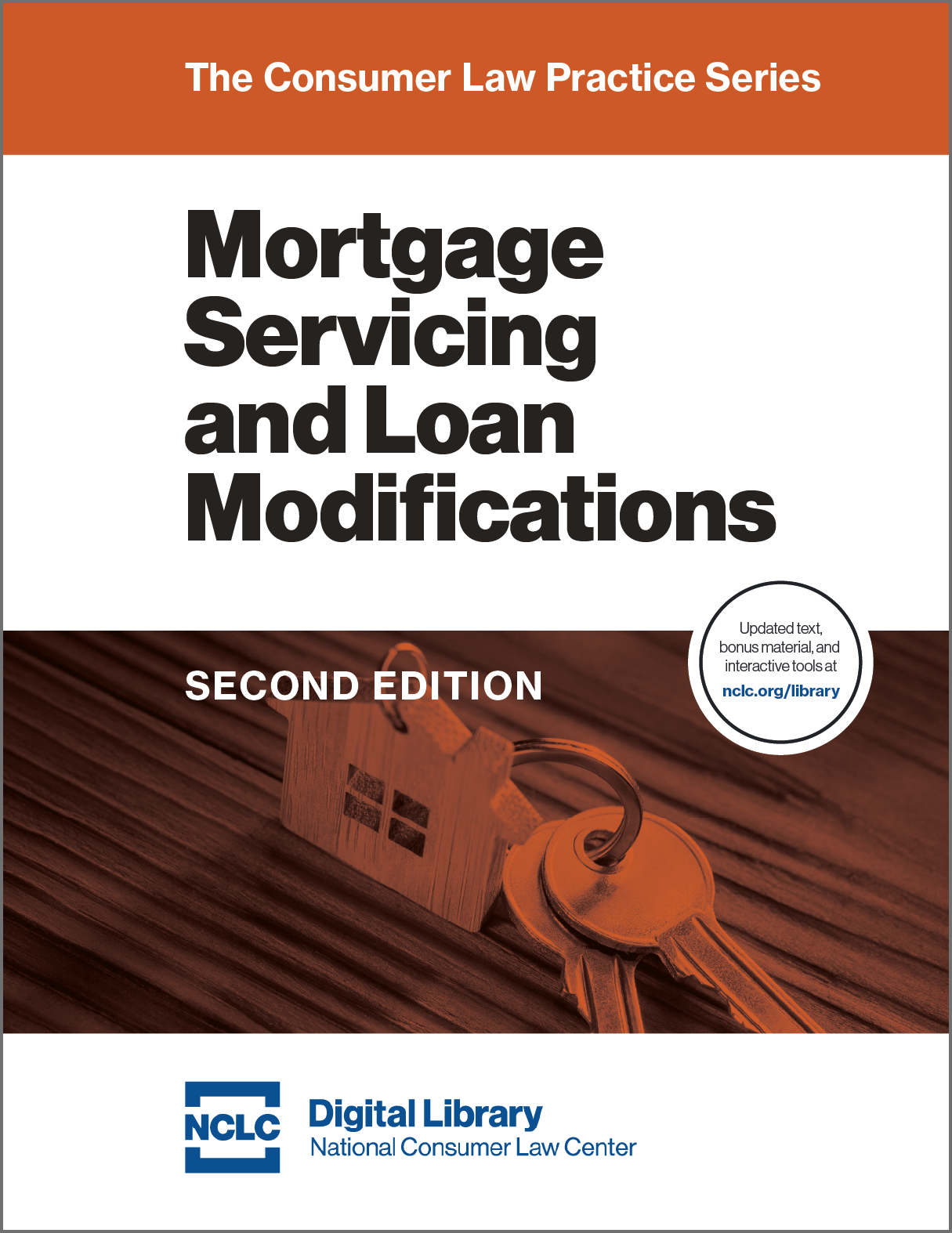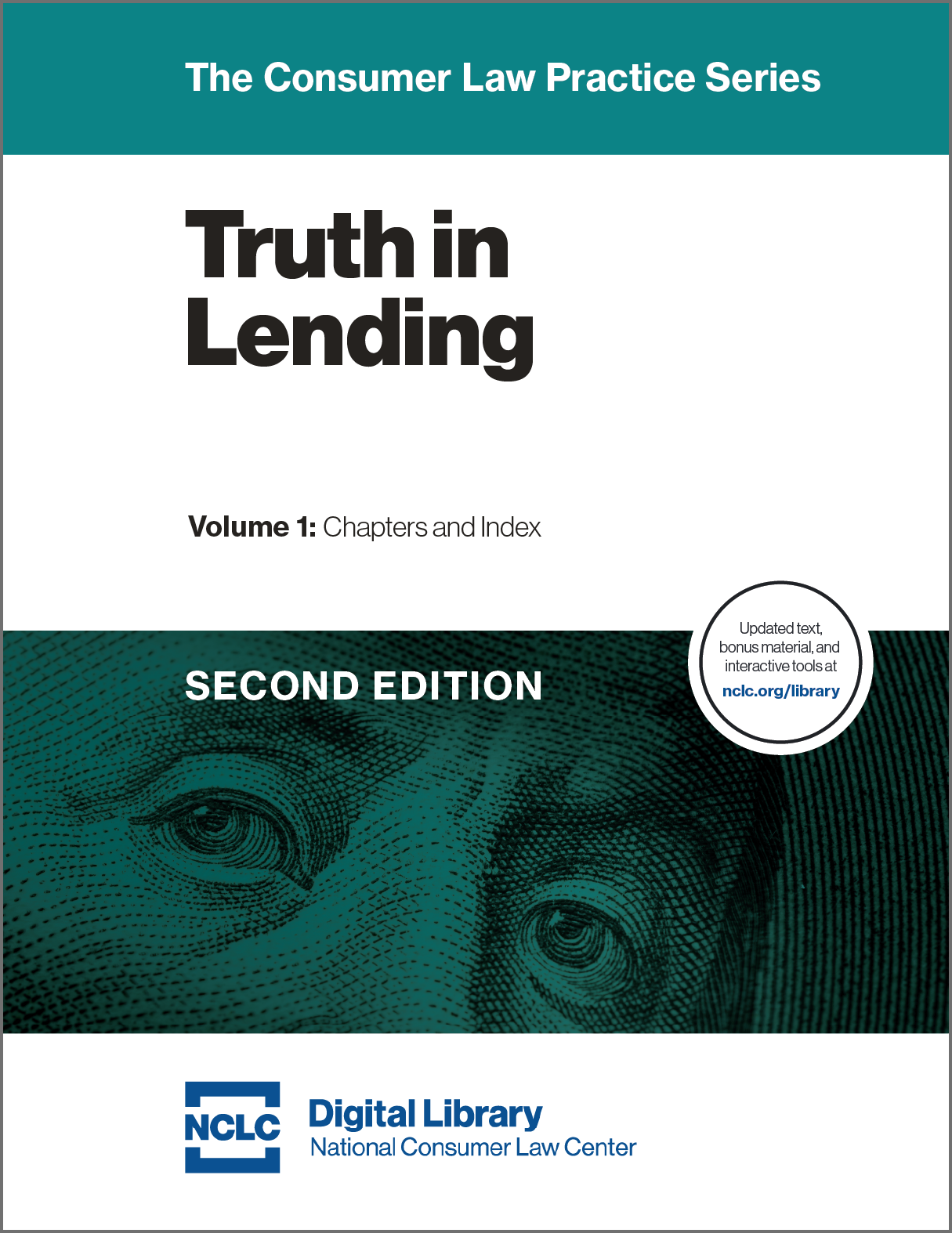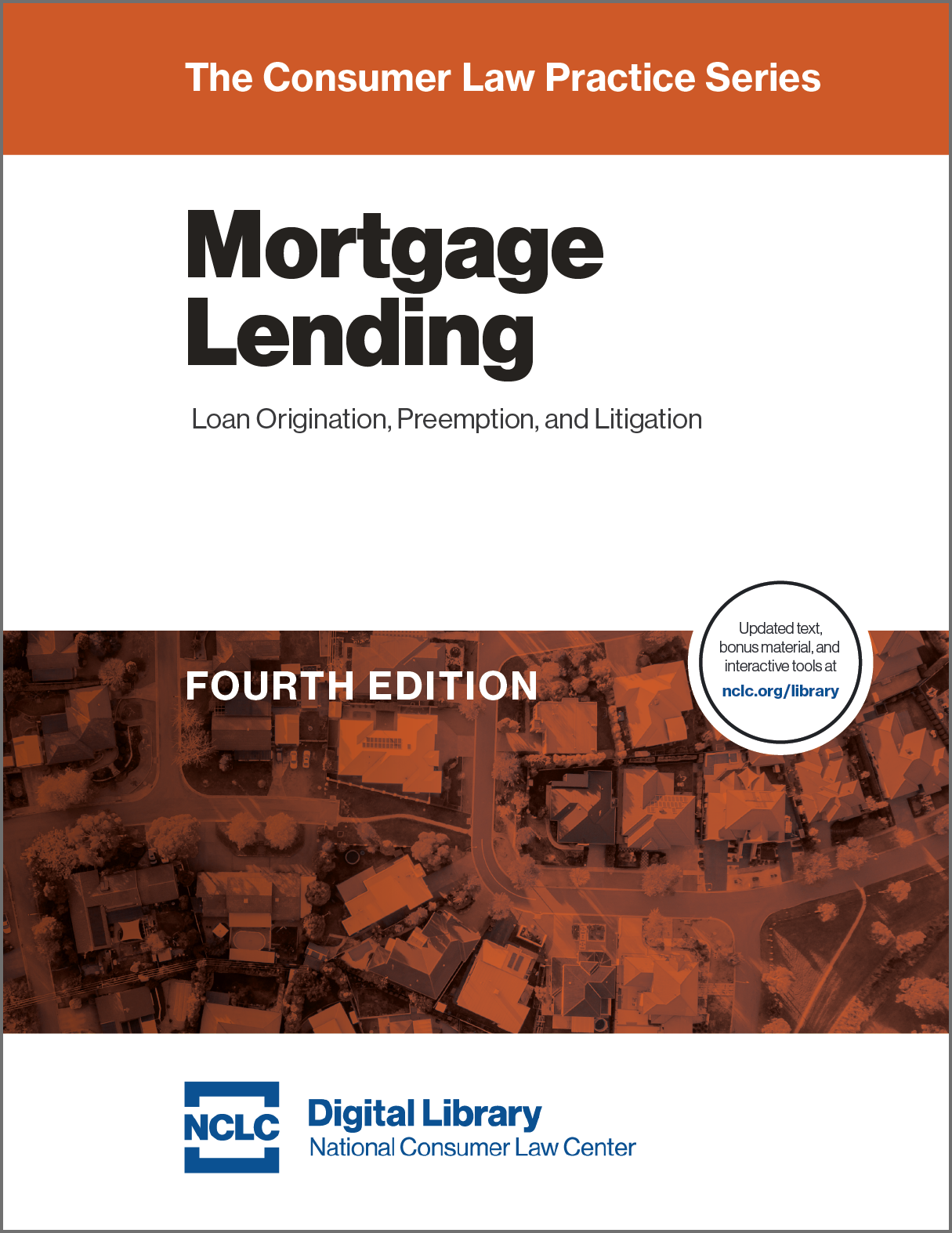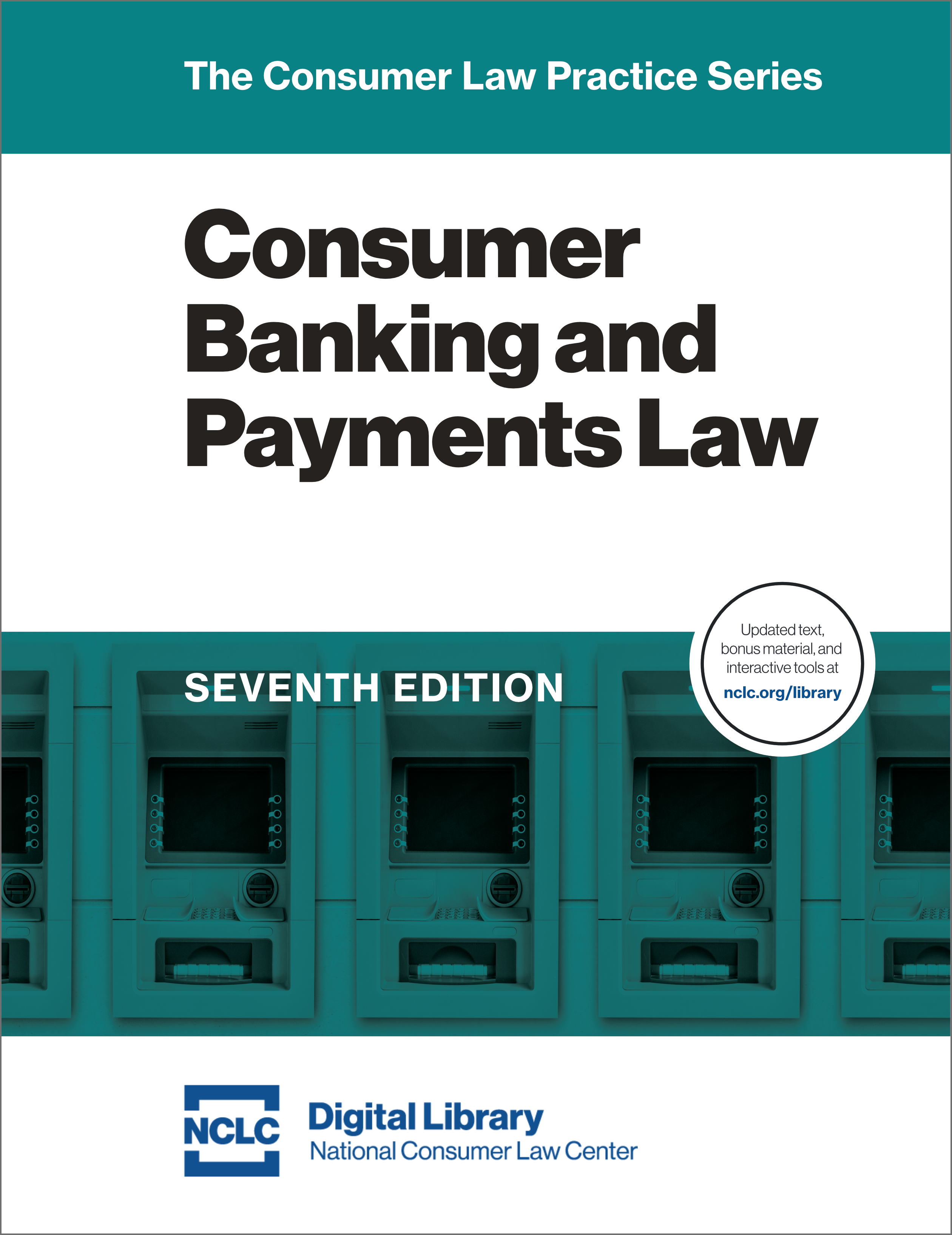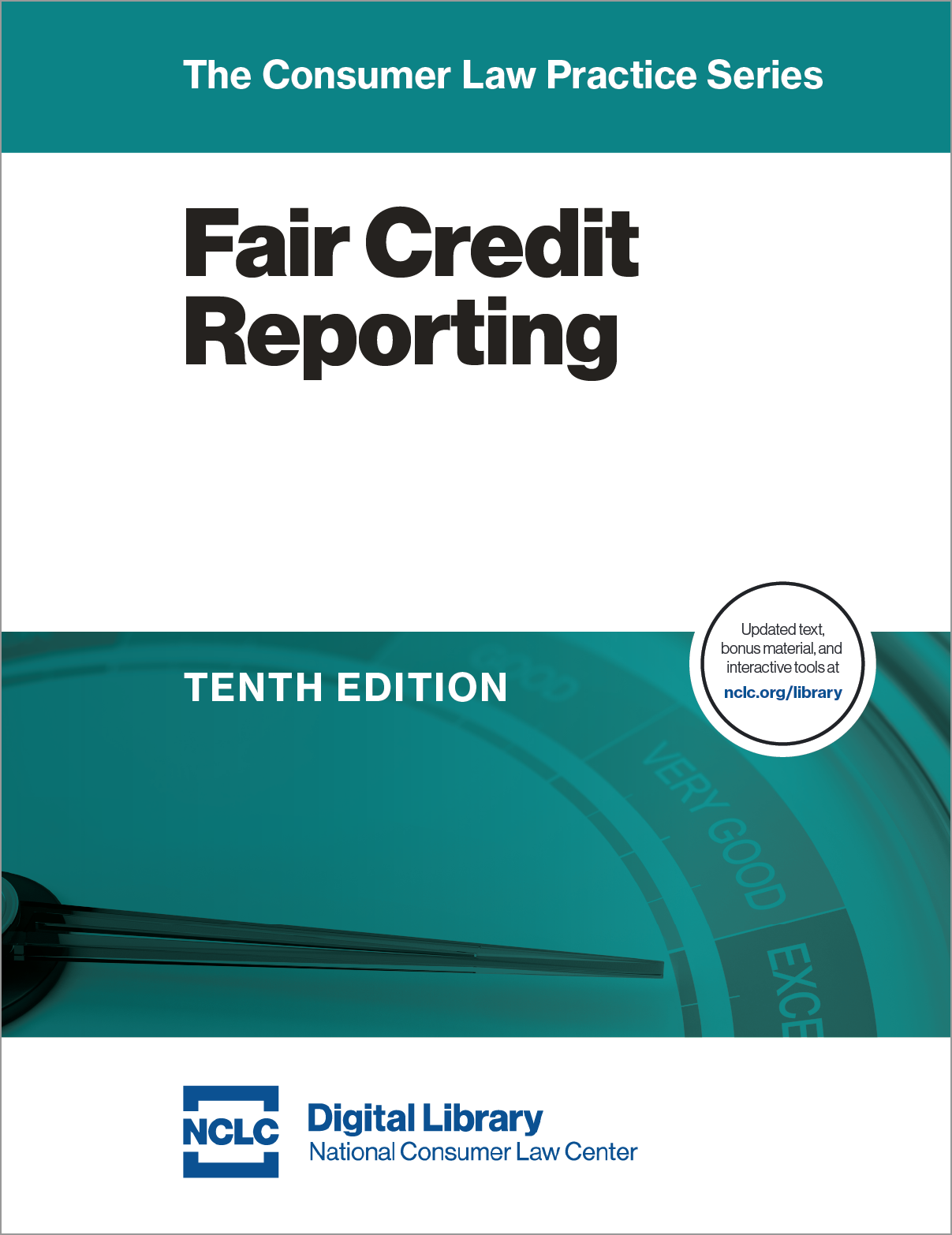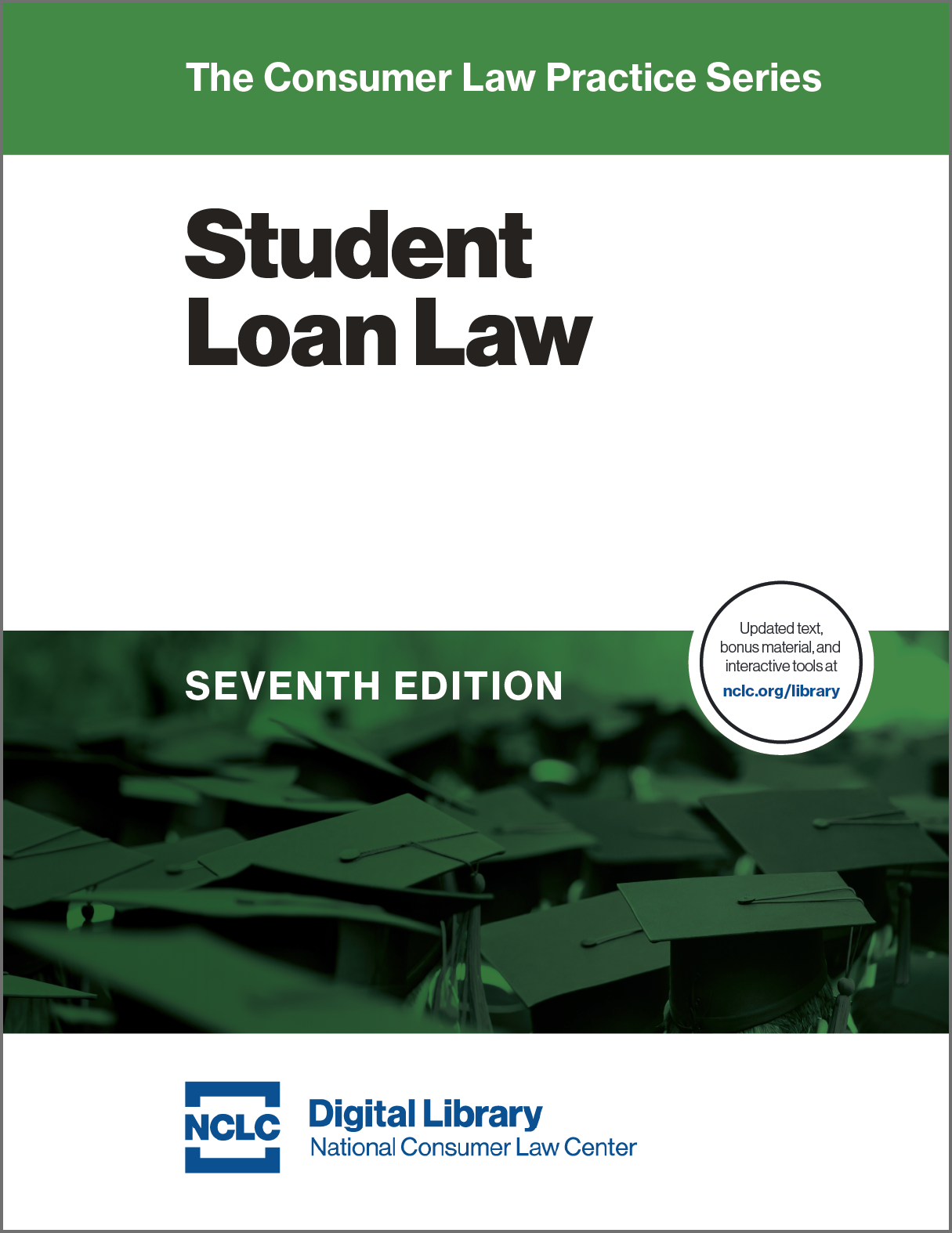Search
A Reverse Mortgage Primer: Consumer Debt Advice from NCLC
How to Prepare for the End of HAMP
New July Student Loan Rule Amendments: What Changes and What Does Not
March 21 Deadline for Servicers to Assign to HUD Certain Reverse Mortgages to Protect Surviving Spouses
New Protections from Foreclosure of Reverse Mortgages
A May 6th HUD guidance provides new protections allowing non-borrowing spouses to remain in a home after the spouse borrowing on a reverse mortgage moves to a long-term care facility or passes away. This article details the new protections, examines other foreclosure risks with a reverse mortgage, and sets out borrower rights and strategies to avoid those additional risks of foreclosure.
Image

New CFPB Rule Protects Homeowners Facing Foreclosure
This article explains in detail important CFPB amendments to RESPA Reg. X taking effect August 31 affecting mortgage servicer early intervention and loss mitigation requirements. The rule provides new rights to homeowners exiting mortgage loan forbearances or experiencing a COVID-related payment hardships—rights applicable not just to federally insured mortgages, but to almost every home mortgage in America.
Image
Twelve Dramatic Changes Offering Relief for Student Loan Borrowers
This article describes new major relief for student loan borrowers: $10,000 or $20,000 for millions of borrowers, and added relief for those in public service, in default, with disabilities, attending specific schools, with private loans, or with IDR plans. New loan servicers and no more private debt collectors. The article links to more detail and sets out steps borrowers should take now to make the most of the offered relief.
Advising Clients When an Abusive Partner Coerces Debt
This article provides practical tips for advising clients with debt incurred by an abusive partner through coercion and fraud—developing a safety plan, documenting the coerced debt, protecting bank accounts, dealing with unauthorized credit card use, preventing an abuser from opening new accounts in the victimized partner’s name, addressing coerced debt on a credit report, and dealing with home mortgages.
Image

Student Loan Borrower Rights After the Supreme Court Ruling
Forty-five million borrowers are scrambling to figure out options for managing their federal student loans before repayments resume this fall. This article sets out new student loan rights: fresh starts for those in default; the SAVE repayment plan; lower interest charges; avoidance of school arbitration provisions; and easier paths to public service loan forgiveness, bankruptcy discharges, and five types of statutory loan cancellations.
Homeowner Tactics to Overcome Problems with Tangled Titles
A new NCLC Digital Library article sets out practical solutions to problems arising from a homeowner's death in dealing with mortgages, foreclosures, reverse mortgages, property taxes and tax sales, utilities, and relief after natural disasters. The advice focuses where a home’s title is tangled—the home is stuck in probate or families living in a home for generations have never properly transferred the home’s title.
Image

Helping Consumers Harmed by Payment Fraud
Fraud schemes usually include forms of consumer payment that limit consumer ability to stop or reverse payment. This article explains payment methods frequently used in fraud schemes and then sets out practical steps and legal rights that may allow consumers to get their money back, based on each of the common payment techniques fraudsters use to receive the consumer’s payment. Links are provided for further help.
Image

Rule on Bounced Payday and High-Cost Loan Payments Now in Effect
The CFPB’s pared down Payday Loan Rule finally went into effect on March 30, 2025. This article explains three surprising facts about the rule’s importance to consumer practitioners: the rule’s provisions offer significant protections, apply to many forms of high-cost lending, and the rule offers substantial assistance in private litigation involving not only overdraft and NSF fees, but also any litigation involving high-cost lenders.
